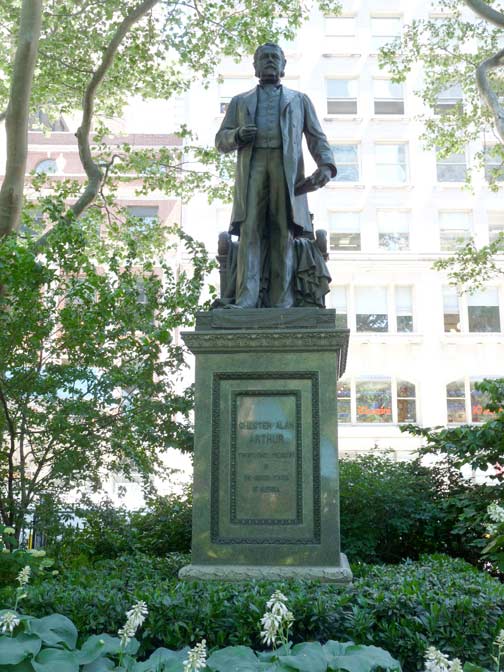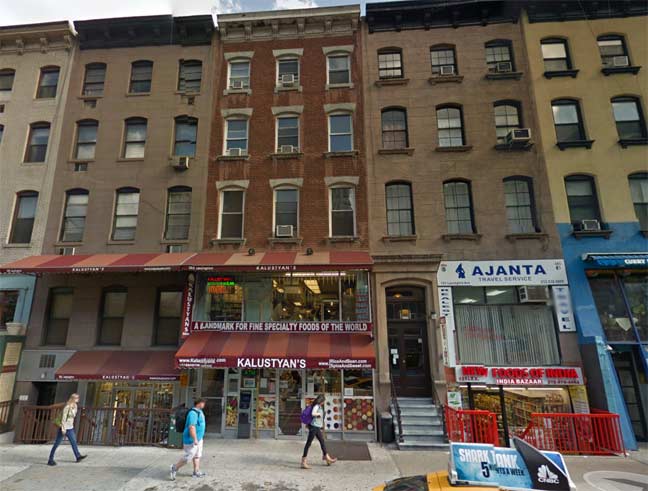
With his muttonchop sideburns, President Chester Alan Arthur (1830-1886) looked the very model of a modern U.S. President (in the Victorian Age), which he was between 1881 and 1885. Born in Vermont but a transplanted New Yorker, he was elected as James Garfield’s vice-president and assumed office when Garfield was assassinated. As President, he reformed civil service and introduced the merit system in federal employment. Despite Mark Twain’s support, he did not get the Republican nomination in the 1884 elections. It may have been just as well, because Arthur knew by then that he had a terminal kidney illness.

His statue, sculpted by George Bissell in 1899, is near the park’s northeastern end at East 26th and Madison Avenue.

During the Civil War, Arthur, who had become wealthy working as an attorney and later, the Collector of the Port of New York, purchased a townhouse at 123 Lexington Avenue between East 28th and 29th Streets (center, with Kalustyan’s specialty foods store, here since 1944). After James Garfield’s assassination on September 19, 1881, Arthur took the Oath of Office here early in the morning of the following day, and again in Washington on September 22. At the time, Arthur was mourning the recent death of his wife Ellen, a former opera singer; their son William had died in infancy. Garfield and Arthur had disagreed politically, and were only on the same ticket because Garfield wanted a New Yorker on the ballot, increasing his chances for election.
Arthur passed away at his Lexington Avenue townhouse from a cerebral hemorrhage on November 18, 1886. Its significance in US Presidential history is mostly forgotten.
The ever-detail-rich Daytonian In Manhattan has more details on 123 Lexington, and on Arthur’s career.
2/16/15
